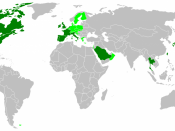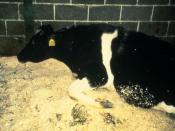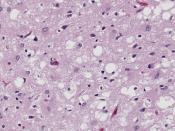The article entitled "Japanese Concerned about U.S. Mad Cow Case" found on the Yahoo financial sections brings to light the second confirmed case of mad cow disease here in the U.S. Such a finding has negatively impacted U.S. beef exports to primarily eastern locations such as Taiwan and Tokyo. These cities together imported more than $1.6 billion worth of U.S. in 2003 before they imposed bans on imported U.S. beef due to the prevalence of mad cow disease. Throughout the next couple paragraphs, I'll explore some of the possible economic ramifications that this finding may have.
Mad cow disease, or BSE, has become a growing problem recently, and unfortunately no scientist yet has been able to determine how cattle used for consumption in the U.S. developed BSE. It is however known that the feed which most of the cattle consume is the primary method of contracting the strange contagion. This is because a huge potion of the feed used for raising cows to a healthy slaughter weight is partially comprised of mulched brain and bone tissue from other cattle.
If said brain tissue were infected with BSE, then the cattle who subsequently consumed the tissue would also contract BSE. Until we can accurately determine when, where, and how U.S. cattle first developed BSE, the future success of U.S. beef exports hangs in limbo.
The affects of this finding reach into Canada as well. The U.S. has had its own ban on imported beef from Canada, preferring it be produced here in America. Now that another case been found here, Canadian officials hope that the U.S. will become more trustful of the Canadian meat, perhaps even thinking it safer than their own. Unfortunately, while considering to lift the ban, cases of BSE in cattle were found in Canada as well.



Could flesh it out a bit more but not bad
I feel that in the second paragraph could go more in-depth on why they feed brain and muscle tissue to the cattle. That was interesting and probably fairly unknown to the public. There are a few run-on sentences for example the fourth paragraph and a 4 line long sentence that could be turned into at least 2 well developed sentences. But it is an interesting article. It also needs to be cited. And the article needs a date, so the reader knows how current this is.
5 out of 5 people found this comment useful.